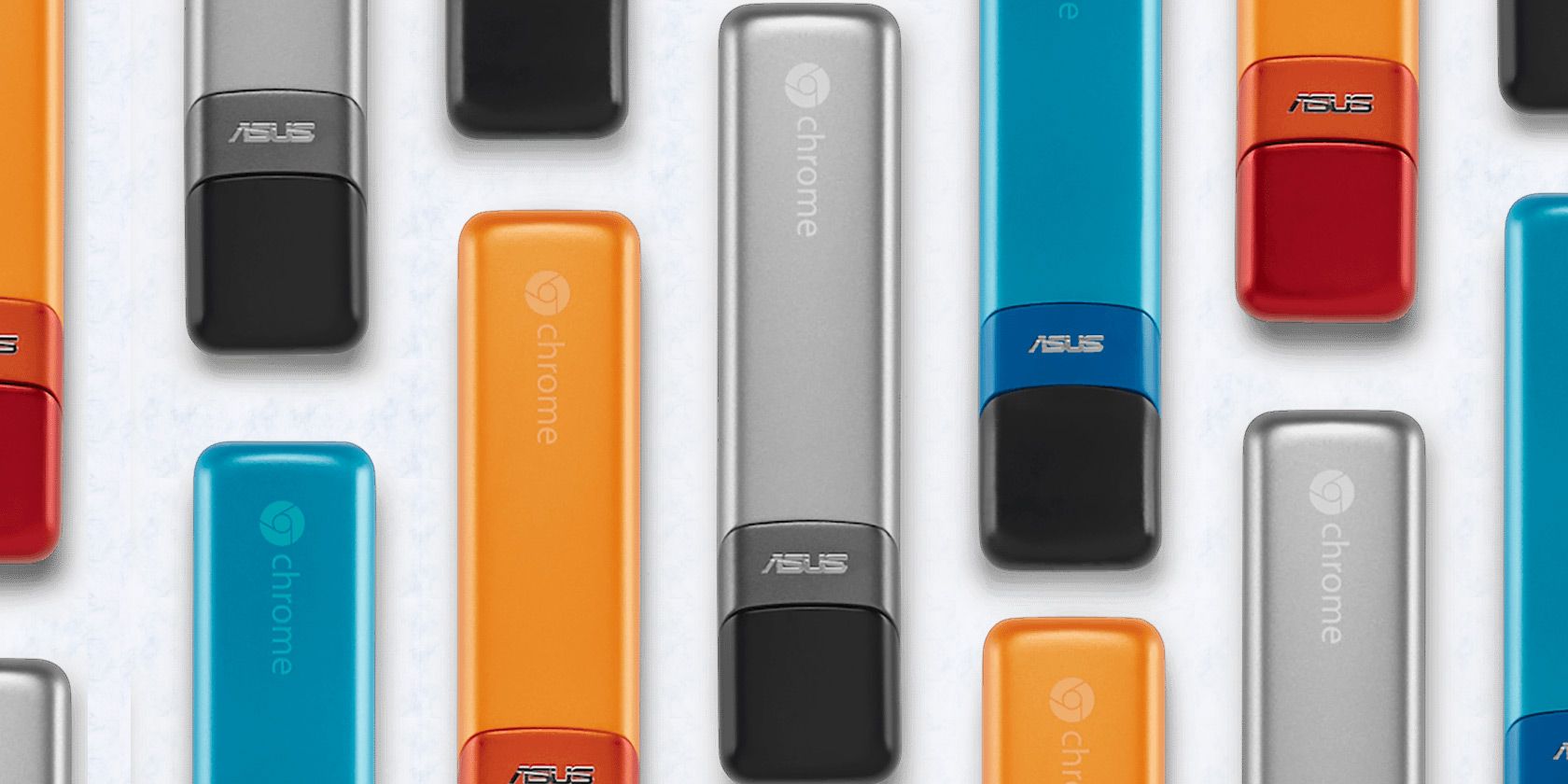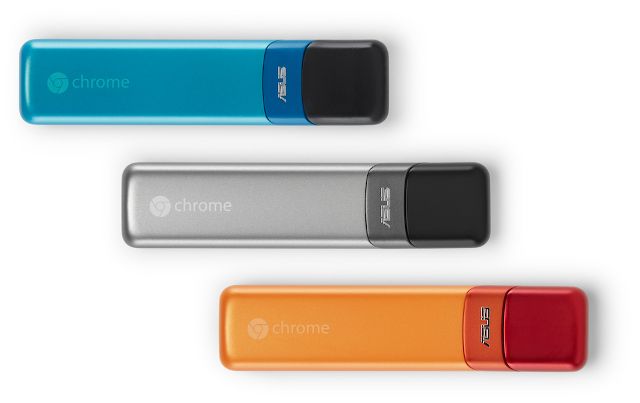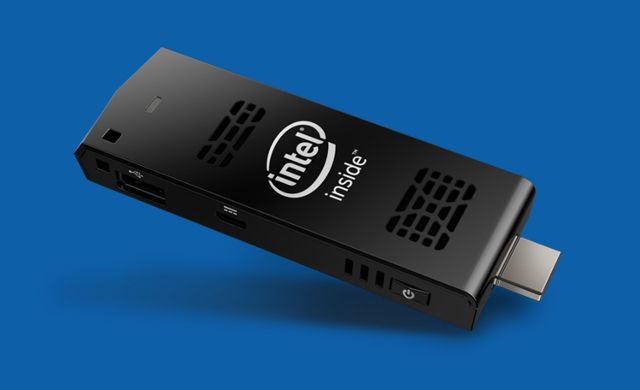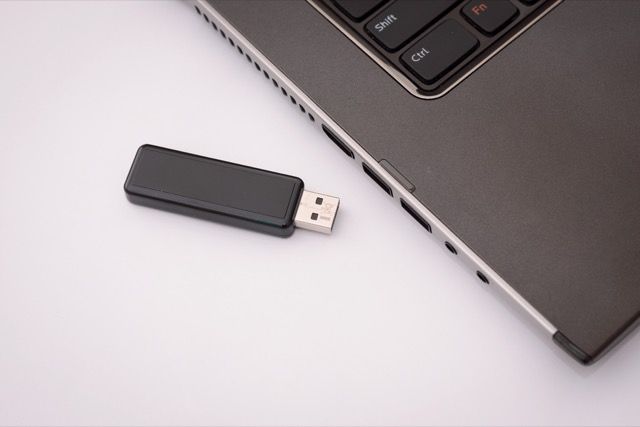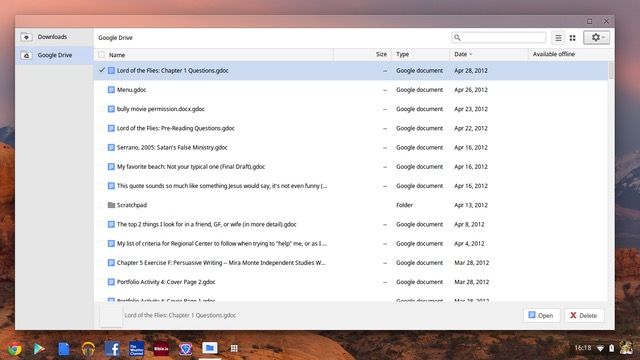How many Chrome products do you use in a day? The Chrome browser? Chrome OS? A Chromebook or a Chromecast? Chrome is taking over the computing landscape, and with the release of the Chromebit, a new stick PC, they're one step closer to domination.
But what is the Chromebit? How does it work? And how does it stack up against the Intel Compute Stick? Let's find out.
The Chromebit: A Tiny, Tiny Computer...
In short, the Asus Chromebit is a sub-$100 computer the size of a large USB stick. The dongle is a few inches long, brightly colored, and includes a phenomenally useful swiveling HDMI head. The other end also sports a full-size USB port.
Plug it into the HDMI port on a TV or a computer monitor and you have yourself a Chromebook in stick form. The dongle packs Chrome OS and a web browser, letting you access the Internet and run Google apps on any screen you can find.
The stick itself contains a quad-core Rockchip processor, 2 GB of RAM, 16 GB of storage, Bluetooth 4.0, dual-band 802.11ac wireless capability, and a USB 2.0 port. Plug a mouse or keyboard into the USB port or pair it up using Bluetooth and you'll have — basically — a fully-functional Chromebook on your TV or monitor.
Obviously you won't be playing any serious video games or doing high-level statistics work with this, but the ability to get on the Internet and use Google's browser-based apps without carrying a laptop is great for road warriors and remote workers. Google also expects it to be popular among small businesses and in third-world countries due to its low cost.
Unfortunately the Chromebit isn't out yet, but we've been promised a "mid-2015" release so it shouldn't be much longer before it arrives.
...But Not Exactly an Innovation
If the Chromebit sounds like something completely new in the computing world, you may have missed the release of Intel's Compute Stick, a similar stick PC that packs a full version of Windows 10 or Ubuntu 14 which we discussed earlier this year.
Because it runs Windows, it means you can run Microsoft Word, PowerPoint, Excel, and other Windows-based apps on the Stick. And with a web browser giving you access to email, you'll be hard-pressed to find a small-business owner or traveling writer who needs much more than what's offered in this small package.
The specs are similar to the Chromebit: a quad-core processor, 2 GB RAM, 32 GB storage, Intel HD graphics, 802.11b/g/n wireless, Bluetooth 4.0, a USB 2.0 port, and a micro SD slot are all included. These slightly better specifications will cost you a little more than the Chromebit.
There are a number of other stick PCs available too, like these Android stick PC models as well as several other Windows options from companies like iView, Lenovo, and Archos. The Chromebit is cool and new, but it's certainly not the first in its field (though it does look a lot nicer than the other options).
Is It Time to Buy a Stick PC?
With the introduction of the Chromebit, the stick PC market is sure to get a lot more attention. It's still a young field with a relatively small number of options, but the competition between them has been fierce. Prices are dropping and it's not hard to get a stick PC for less than $150 — in fact, the Tronsmart Mk908II is available for as low as $60.
But there are a few questions you should ask yourself before you buy one.
First, do you need the ultra portability? If you carry a laptop right now and it isn't a big deal, you may not need to go any smaller. If you do, a Chromebook may solve the problem. Even though a stick PC is extremely portable, you'll sacrifice some computing power compared to a laptop, especially when it comes to multitasking.
Second, will you always have a TV or monitor available for use? If not, you'll have a pocket-sized computer that you won't be able to run, and what good would that be? If you end up having to carry around a small monitor, you're much better off with a laptop.
Third, which operating system do you prefer? If you're willing to switch to Chrome OS, you'll be set for less than $100. If you need more powerful apps, like the Microsoft Office Suite, then the Compute Stick will better meet your needs.
Finally, ask yourself if you might be better off waiting a bit.
Having the coolest, latest thing is always great, but don't jump on the bandwagon just because it's in front of you. Many people are worried about the small size of stick PCs making them easy to lose, which would be especially bad if you use it for work. People already lose USB sticks all the time, plus they may be easy to break if they're dropped or accidentally put through the wash.
And if you compare stick PCs with the best mini-PCs available, they just don't stack up. They might perform well for how small they are, but they're still not that great in the bigger picture.
The Winner: Depends on Your OS Preference
When it comes down to it, you should probably buy the Chromebit if you're alright with Chrome OS and the Compute Stick if you want Windows and Microsoft Office. If you decide to buy a stick PC, that is, which is recommendable only if you need the absolute maximum portability.
What do you think of the new stick PCs? Would you go with a Chromebit or a Compute Stick? Do you have any plans to buy one? Share your thoughts below!
Image Credits: Google, Intel, Surapong Naowasate via Shutterstock.com, Google

